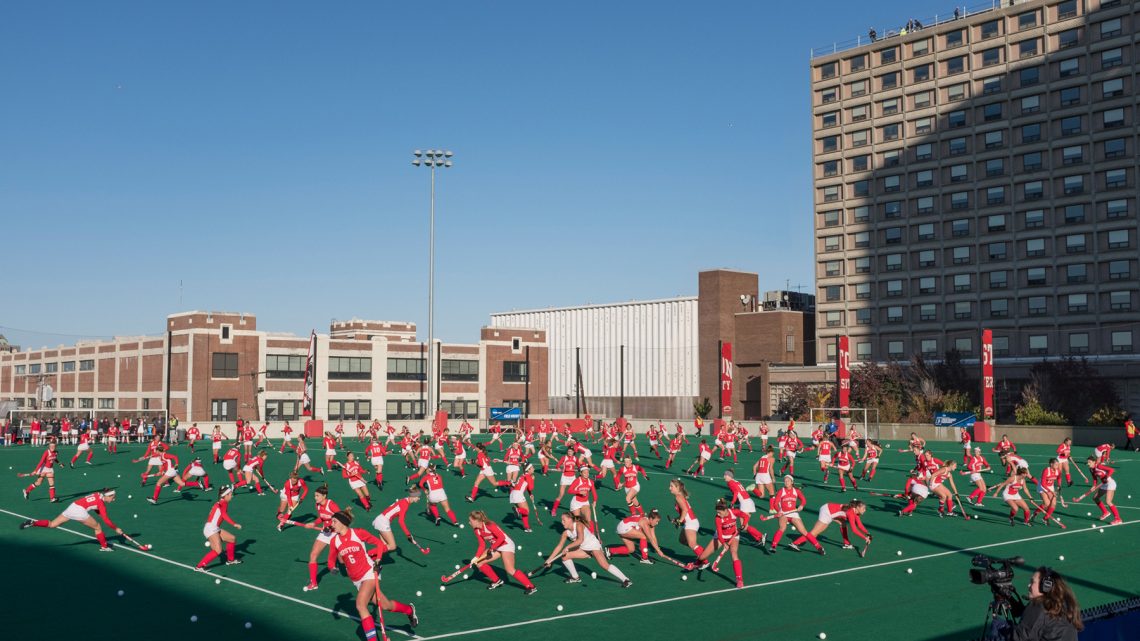
Seven Photographers Who Are Rewriting Street Photography’s Rigid Rules
April 10, 2019One of the first photos ever taken was “View From The Window at Le Gras,” a Parisian street scene made in 1826 by French inventor Joseph Nicéphore Niépce who exposed the image onto a sheet of bitumen-coated pewter for around eight hours. It was a view from his window, a people-less, grainy mess of shapes and shadows that, today, feels more like a photocopy than a photograph. At the time, it was a pretension of truth, a signal of technology representing “reality” more accurately than painting, drawing, or any other artistic medium. And while the image is free of people, it’s historically been considered “street photography” because, well, it’s a photo of the street.
In the century-plus following Niépce's experiments, attitudes towards street photography, photographing in public, and the possibility of the medium—digital or not—to achieve any sense of objective truth have changed continuously. For years, many traditionalists treated the genre with a rigid sense of rules prescribed by street-photo-godfather Henri Cartier-Bresson. No double exposures, no printing techniques that might obscure the original content on the negative, no cropping that could change what was captured. Some insisted on including the edges of the negative on their prints as “proof” that the original photo had not been altered.
And then Photoshop and digital photography opened up a whole new can of worms.
The following seven photographers mark street photography’s many contemporary directions and its ability to stay varied and continue to grow beyond the strictures of its most traditional tyrants. Some use digital tools to reform how we understand public spaces, others create varying degrees of staged interference, while still others let it all happen naturally, topped off with the raw power of a flash. Most of these photographers are sharing work daily on Instagram—I encourage you to keep up with their work.
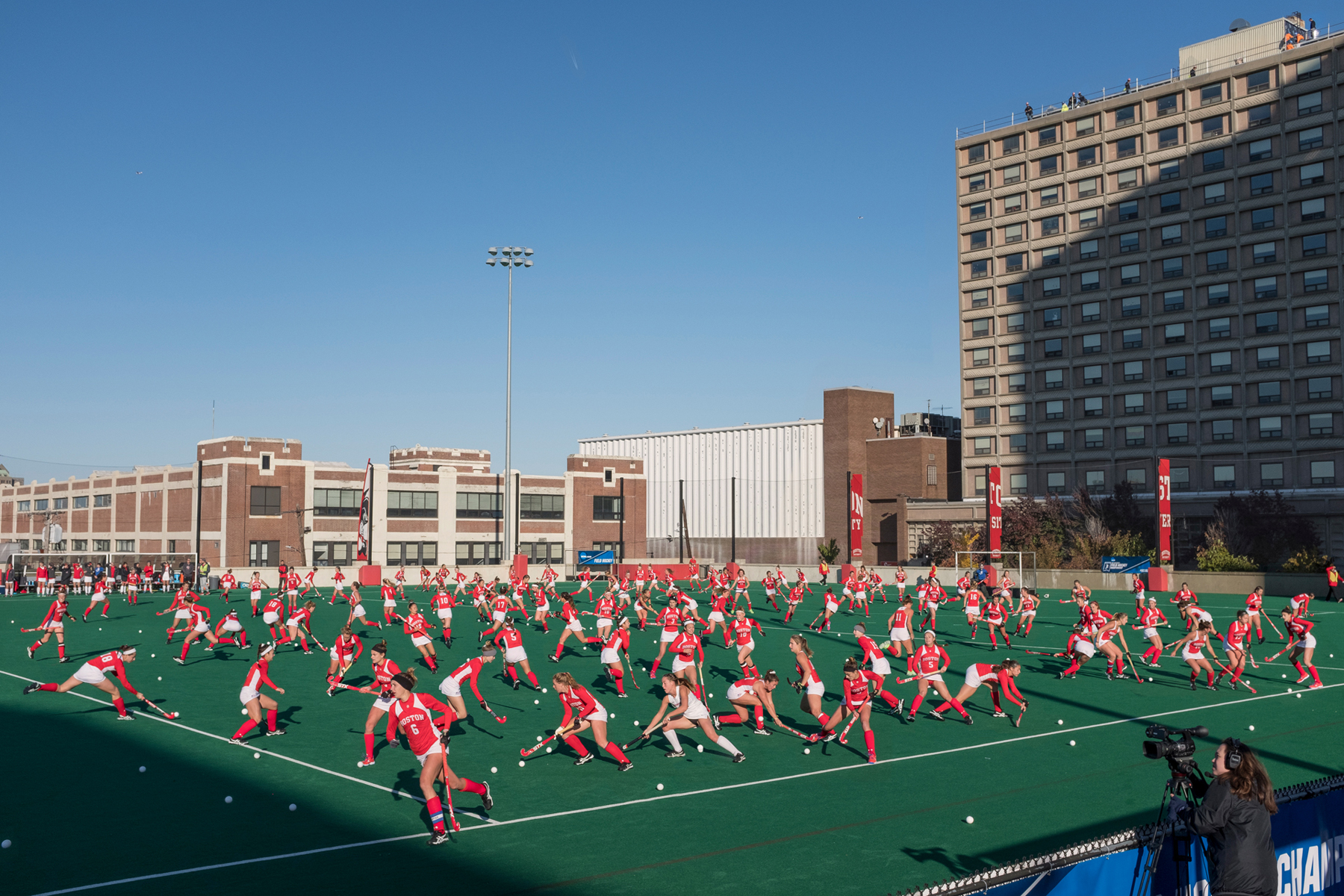
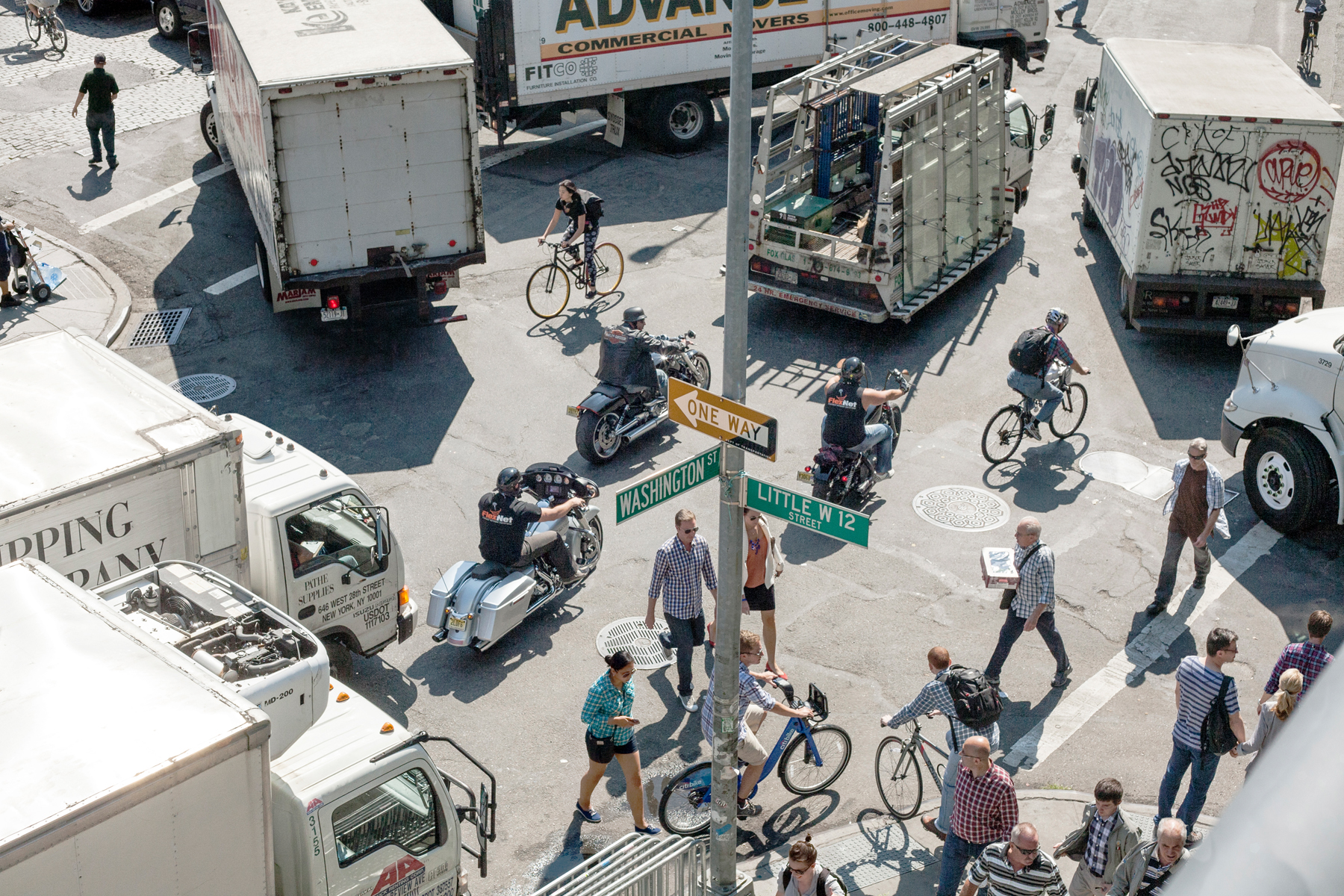
Pelle Cass
When Henri Cartier-Bresson coined his famous “decisive moment,” the idea that a successful photo combined timed, almost mystically frozen elements, Pelle Cass’ fantastical digital shitstorm likely wasn’t on his mind. A photographer and digital artist who purists love to hate, Cass combines hundreds of singular moments shot in the street and other public locations. In his photos, made in locations ranging from nondescript city streets to college sports arenas, bodies battle for attention, perfectly stopped and coordinated. Cass’s ongoing series Selected People began in 2008 in Brookline, Massachusetts, where he lives.
He went out during his lunch break, set up his camera on a tripod, and photographed continuously, layering the images back at the office when work was slow, leaving in some figures and omitting the rest, keeping the environment untouched. “It felt like stealing time from the company,” Cass tells VICE, “but it also felt like it saved my life.” Cass’s interest lies less in digital wonders or tricks; instead, he’s drawn to the camera’s historical ability to record and compress the strangeness of time.
“I’d look at a stretch of sidewalk, and wonder what had happened at this one spot over the days, years, and centuries,” Cass writes over email. “I realized I could capture a small portion of this with a camera.” He describes being drawn to the rhythmic and complicated pace of public space. In one of his first photos from this series, "Football, Cypress Field, 2009," hundreds of teens swarm a green field. Footballs fly everywhere and bodies repeat themselves under the bright midday sun. Despite what might seem like chaos, there’s a sense of order to it all, dozens of universes coexisting on a single continuum.
In a later image, "Highline, 2013," shot from above at the intersection of Washington St and Little West 12th in New York City, multiple trucks, bicycles, pedestrians, and motorcyclists jam the street. If this were a single, undoctored moment, we’d feel the frustration of gridlock, but somehow, like in Cass’s image of Cypress Field in Brookline, Massachusetts, there’s a sense of calm, of working together, of everything falling into place and going about as usual.
Beginning in 2017, Cass began photographing organized sports for a series called Crowded Fields. In the photograph "Water Polo Match, Harvard, 2018," bodies submerge and splash in a pool, some facing each other, some looking in different directions. Arms flail in a balance between casually swimming, competing, and struggling to stay afloat. Like Cass’s earlier photos, despite a bit of chaos, they hang in unison. There is a sense of alignment, of working together, of everyone getting along.
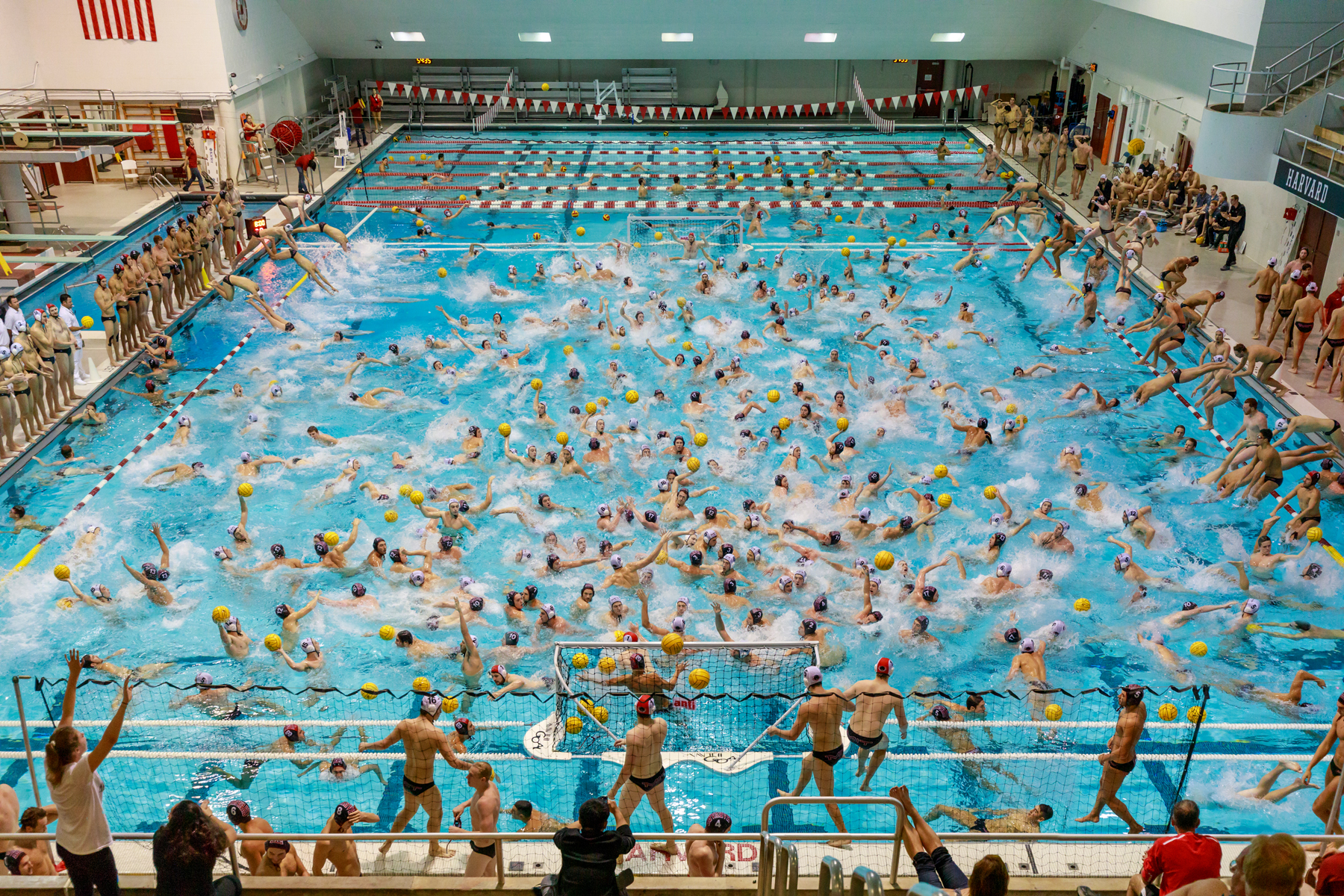
Over the years, Cass has received criticism, not only from puritanical street photography traditionalists but also from those like British tabloid The Daily Mail, who describe his images as one-liners or “tricks” relying on a tool rather than a spirit thick with time and emotion. But Cass believes his images are actually more truthful—because they show many instances of what happened in a particular place, not just a single slice. “In all these criticisms,” he writes, “what bothers me is that people seem to be afraid of or at least averse to something new. Perhaps my work is a gob of goo on the slippery slope towards weaponized image fabrication. If so, then let me say that personally and politically, I stand proudly for facts and truth!”
Clarissa Bonet
In City Space, Clarissa Bonet hires actors and stages simple scenarios to make sense of her own experiences and observations of Chicago's urban landscape. Rather than trying to capture a decisive moment as it happens, she directs these actors to recreate her memories within the city.
In one image, a woman stands dwarfed at the bottom of the frame below office building windows, her white hair blown forward, covering her face. In another photo, three figures jut in and out of the entrances to a similarly overwhelming office building amidst cool, clean, muted light. While their clothes imply social and economic class, all but one face is obstructed, rendering them not much more than elements of architecture. In image after image, bodies, often draped in the blackest shadows, fade into the structures that surround them. In contrast to Pelle Cass’ stormed moments and people fused on a single picture plane, Bonet’s photographs rarely include more than three or four people—and often focus on a single person. They are slow-cooked pictures of the psychological space that exists between humans and the concrete structures we’ve built: quiet, yet loaded with a struggle to exist.
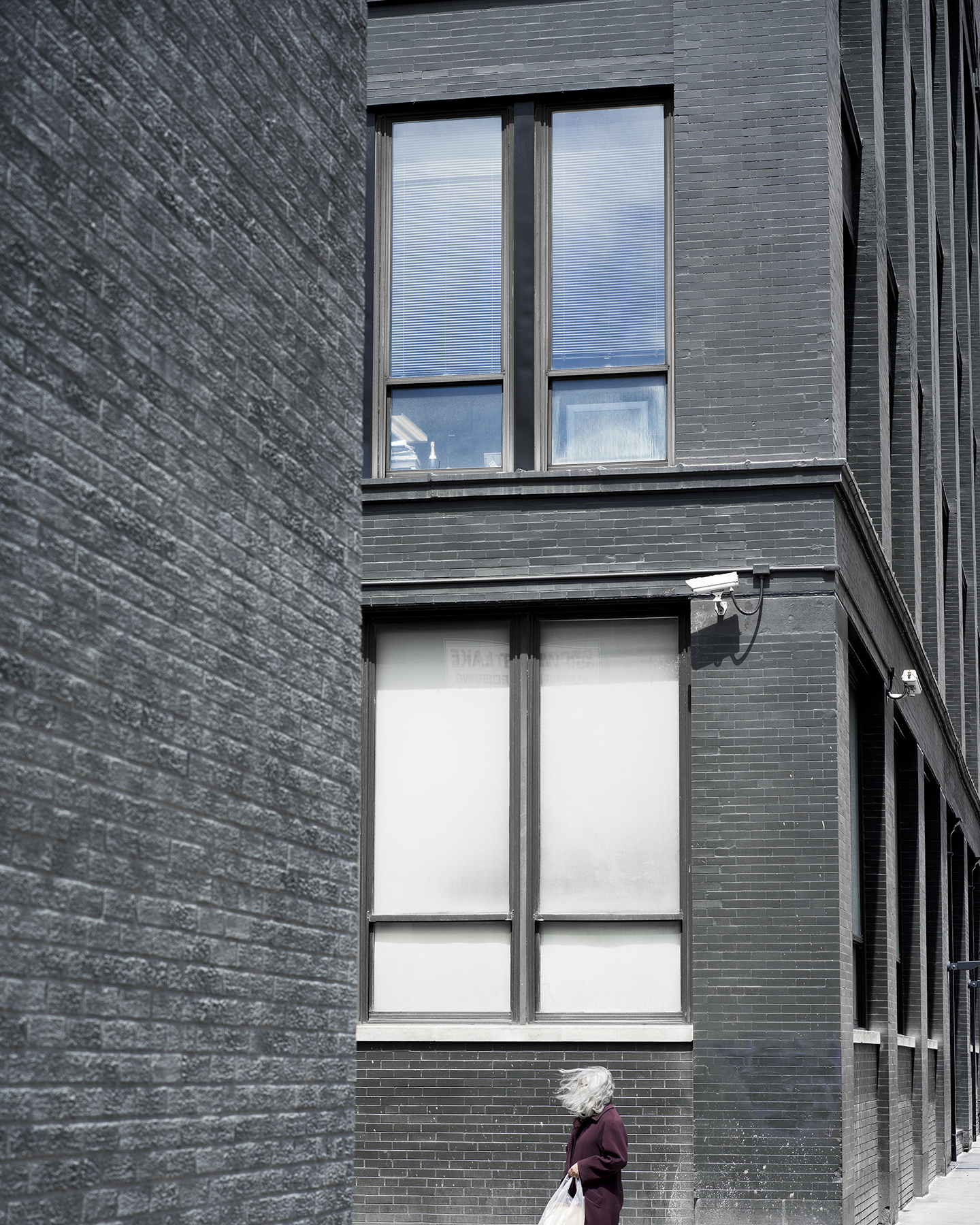
Bonet makes these images based on memories of her own fleeting moments within the city, using actors she hires as stand-ins for ongoing processing of the landscape. She wanders Chicago’s streets for hours, takes notes, makes sketches, takes snapshots on her iPhone, and returns to the studio to begin planning her shoots. Casting follows, and Bonet selects locations not only for their aesthetic but for what’s least risky to shoot in without a permit.
Many of the images are shot from a distance to help convey the buildings' towering psychology, so Bonet uses an earpiece to direct her actors from afar. “I’m tuned into not only what I observe,” says Bonet,” but how I feel in relation to the physical structures or how I interact with the physical space itself. I’m constantly asking myself how I can use the environment in relation to the language of photography to present the viewer with an image from my point of view.”
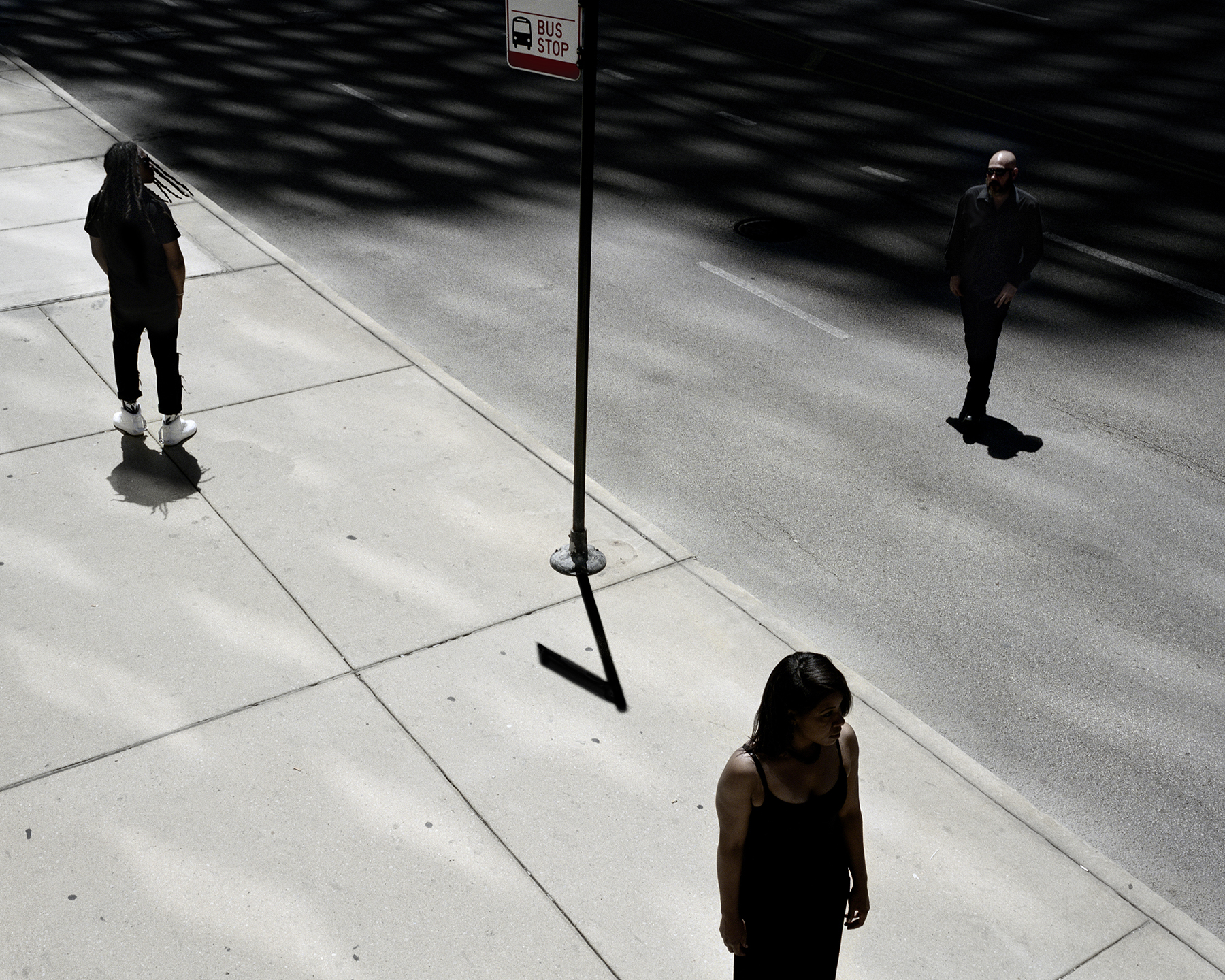
Whether or not Bonet can “officially” be considered a street photographer is another “who cares” question, but what’s clear is that her work uses the visual language of the genre to process public space. “The main difference between what I do and a traditional street photographer,” Bonet tells VICE, “is I choose to fully observe and experience fleeting moments rather than mediate this experience in the moment with the camera.” Bonet’s process allows her to control and recast her internal experience and visualize it for the outside world.
Haley Morris-Cafiero
In 2010, Haley Morris-Cafiero was working on a series of self-portraits and shot a roll of film of herself in Times Square. When looking through the contact sheet, a few frames in, she noticed a man looking at her with disgust. This repeated periodically throughout the sheet, prompting Morris-Cafiero to start Wait Watchers, a series of images of the photographer in public places being mocked, side-eyed, and humiliated for her weight.
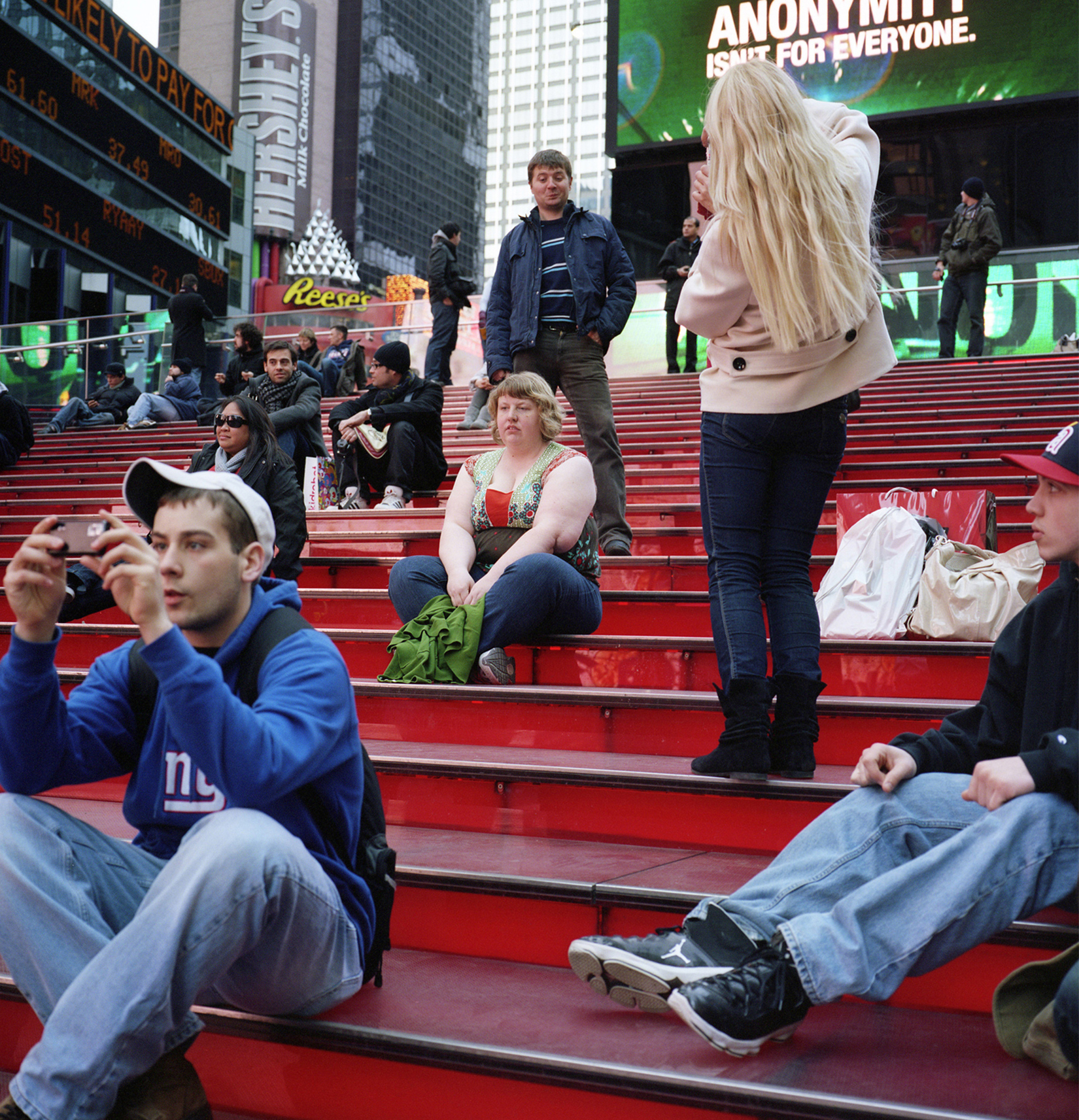
Morris-Cafiero immersed herself in heavily populated areas—beaches, touristy areas in NYC or other dense cities, anywhere where someone in the crowd might mock her. She performed everyday acts: crossing a street, sitting and checking her phone, looking at a map, attempting to blend in while an assistant photographed her from nearby. Shot on film to stick with the parameters of her original idea, each shoot began with a mystery—what awful stare would materialize when the contact sheet was printed? What painful look would reveal itself? Following this, she shot mostly with a digital camera, but her process of waiting to look remained. “I never knew if I had an image until I got back and looked at the images on a larger screen,” Morris-Cafiero tells VICE.

The results were consistently disheartening, ranging from subtle glances of disapproval to full-blown mockery. In one image, Morris-Cafiero waits in a crosswalk for the light to turn, holding an ice cream cone. To her left, a thin adolescent girl sneers while holding her hand up against her flat stomach. In another, she stretches on a boardwalk while four onlookers stare and laugh. These hard, upsetting moments force viewers to confront what judgement looks like.
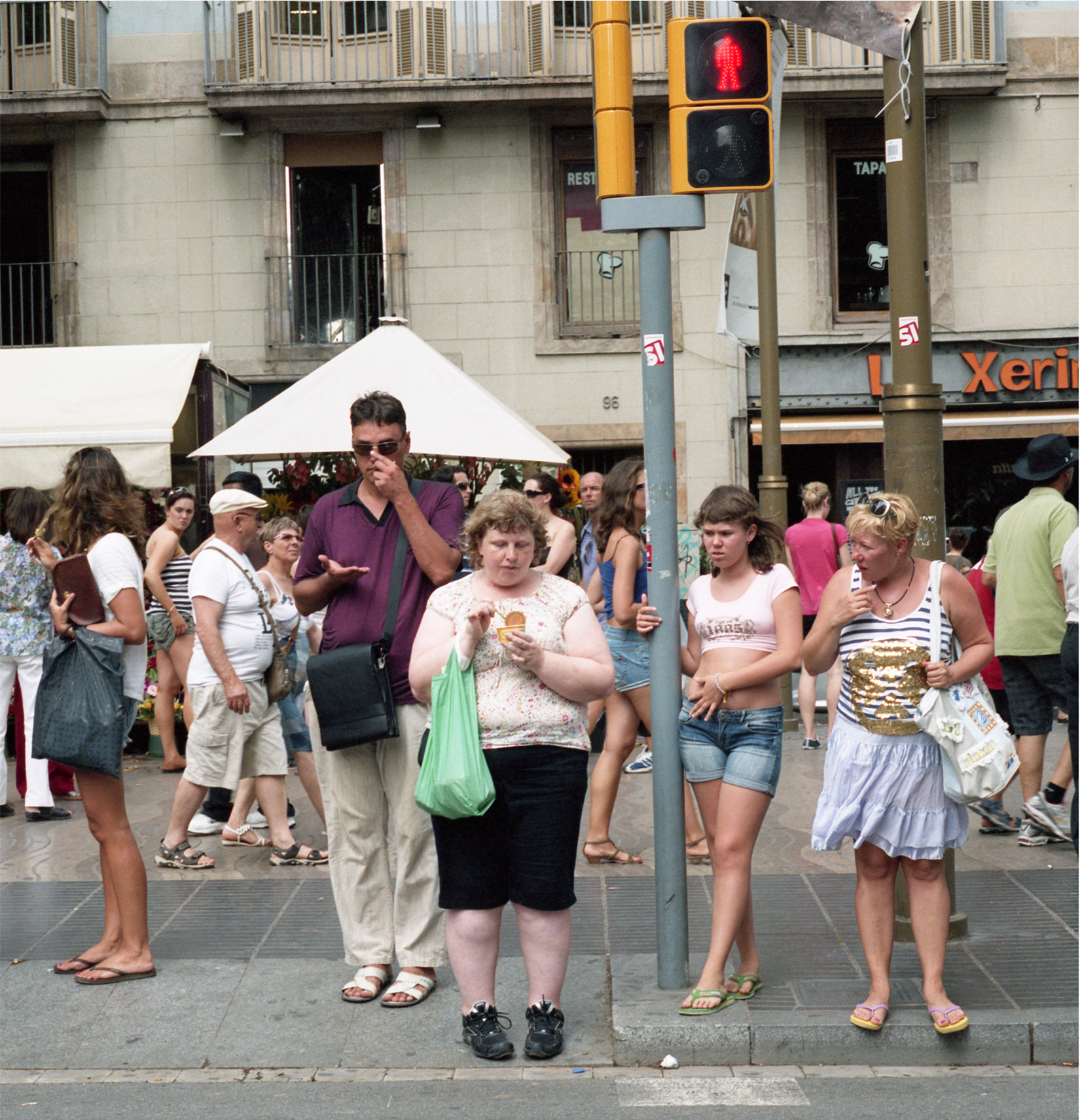
Although she photographed without cropping or direct staging and made no digital manipulations, there is an element of theater that might lead to questions about the photos’ authenticity. How visible was the camera? How do we know the photographer didn’t do something to call attention to herself? While she generally spent 5 minutes or less on each shoot, attempting to get the shot before anyone noticed the presence of the camera, whether the images are “true” to the moment doesn’t really matter. They appear—like in the original photo in Times Square—all the time, as Morris-Cafiero makes us painfully aware..
Heloisa Lodder
A commonly understood rule of street photography is “don’t photograph the homeless,” and it’s for a good reason. What empath, in their right mind, would make pictures of someone with the least amount of power? It’s a photographic cheap shot (and cliché), shooting someone when they’re down for the sake of your art. Heloisa Lodder’s photographs walk this line, but with a new vision, an attempt to raise awareness of their plight and encourage viewers to acknowledge their humanity.
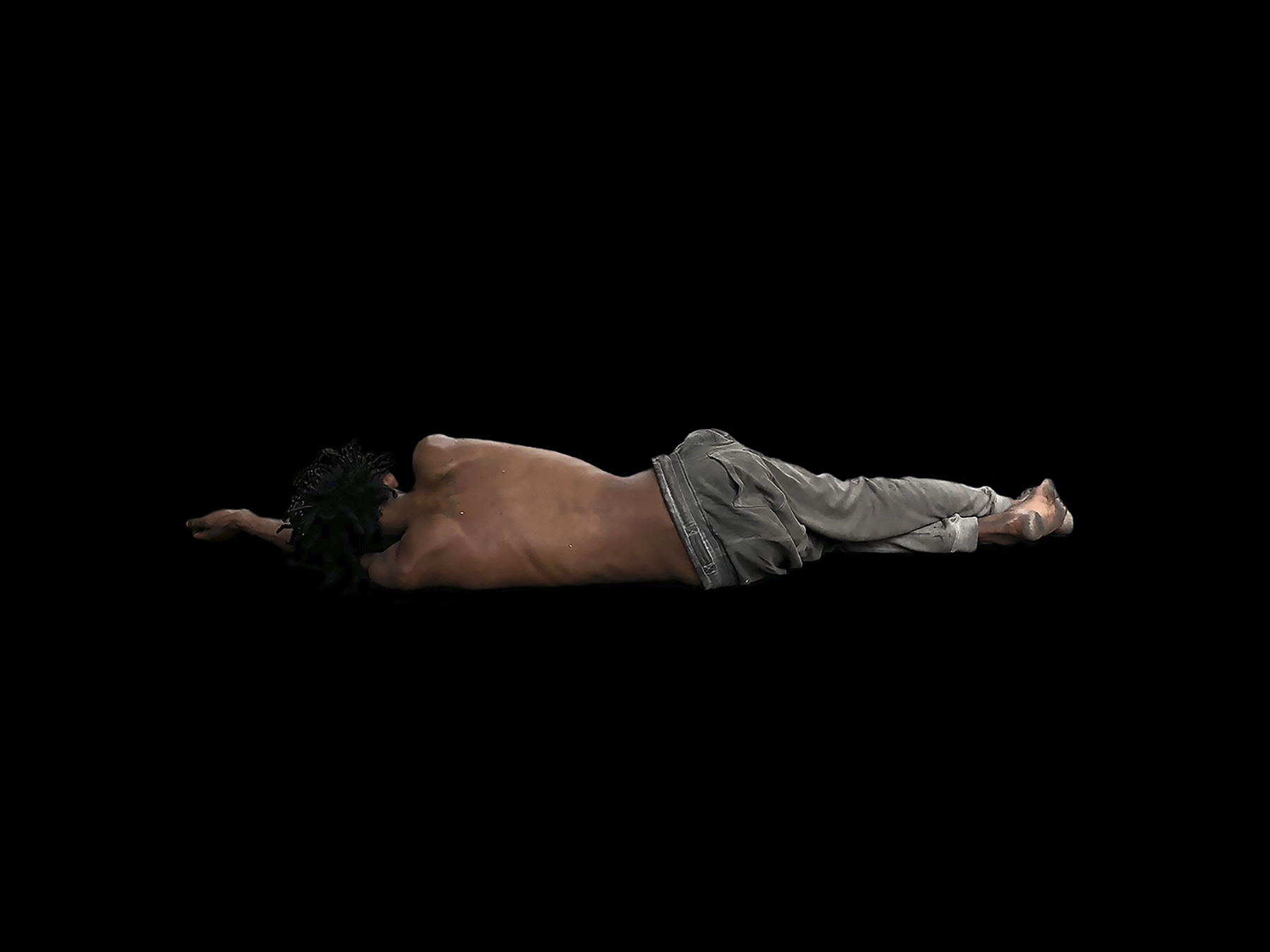
Lodder’s Studies on the Dignity of the Human Person is a series of photographs of homeless people in Sao Paulo, individually isolated from the streets and superimposed onto rich black backgrounds so they appear to be floating in space. Their backs often face the camera and our gaze, their faces turn away; humans digitally typlogized into object-bodies. Lodder took many of these photos as she rushed through Sao Paulo’s downtown streets, often with a cellphone, her subjects almost always sleeping, unaware they were being photographed. She started this series in January 2018 during a financial crisis in Brazil and sought to highlight the daily contrast she’d see between the growing homeless population and executives.
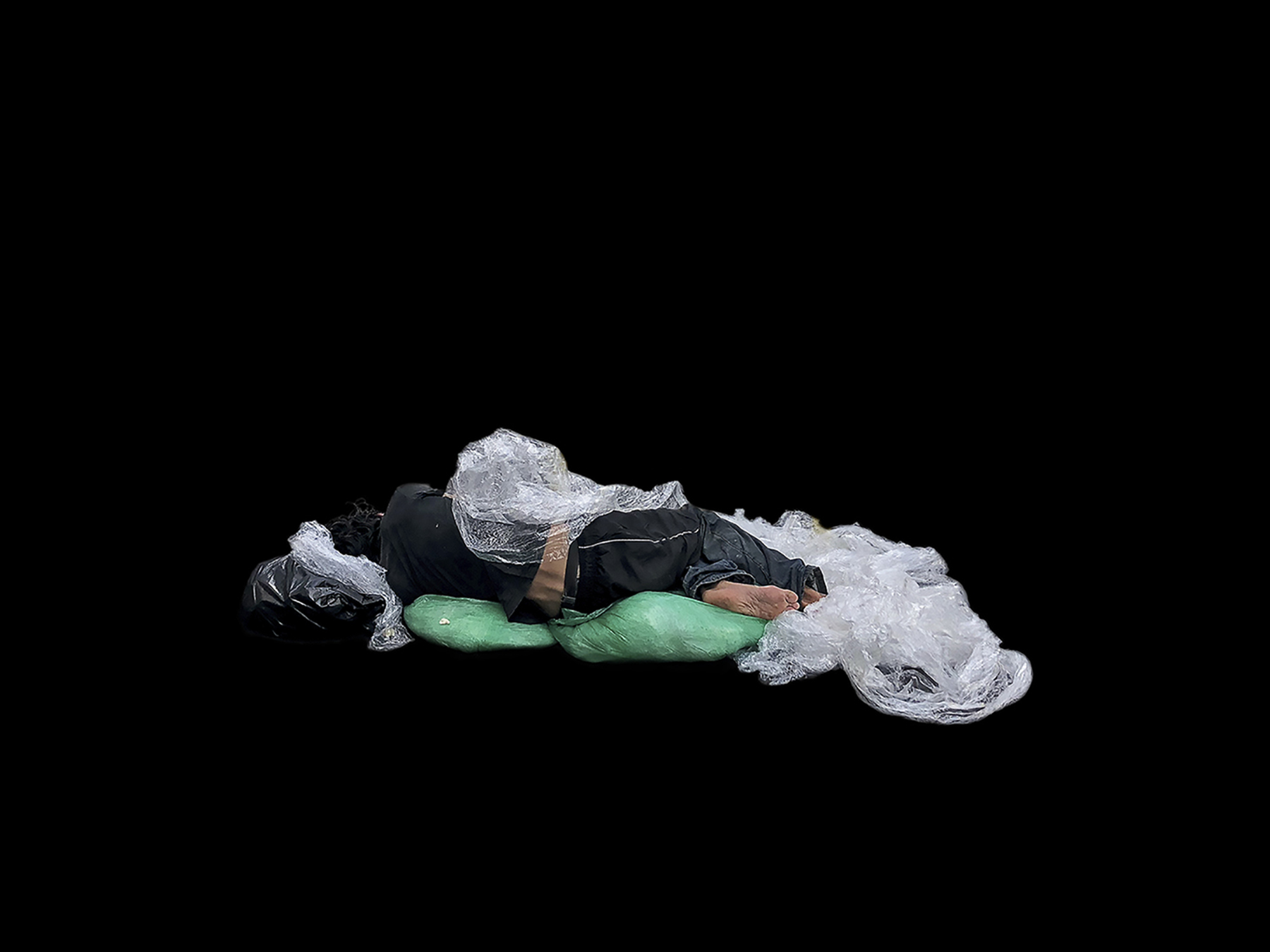
Viewing these photos and knowing Lodder’s process raises questions about her intentions and social responsibility and she's aware of its contentious charge. “Yes, it certainly feels that way, and I intended it to,” she tells VICE. “We have faced scenes of poverty and misery every day, and from the beginning, I wanted to direct my work towards a different point of view. I developed my work under a scenario called ‘social vulnerability,’ where few seem to be sensitive to it.”
While photographing a vulnerable population without permission can be exploitative, Lodder sees her work as humanizing. The “social vulnerability” she describes challenges viewers to rethink their relationship to the homeless while drawing attention to our unspoken, dehumanizing process of looking away. “Conceptually, I intended for my artistic process to represent them with some human dignity, withdrawing them from the streets. I seek to bring them closer to their human essences (which seem to have been revoked), and, also, to approximate them to their fellow human beings.”
Michelle Groskopf
“We are all outsiders looking in, trying to understand our place in the world,” Michelle Groskopf tells VICE. “We are interpreters wandering around bearing witness to all of the beautiful and ugly humanness that plays out around us.” Groskopf’s photos are eloquently jarring and confrontational, yet empathetic pictures of people and environmental elements in LA and other cities around the world; things that catch her eye as she wanders the streets. While she's photographing strangers, her pictures are personal—they help her better understand herself: how she sees, what she looks at, and what that signals about her own psychology.
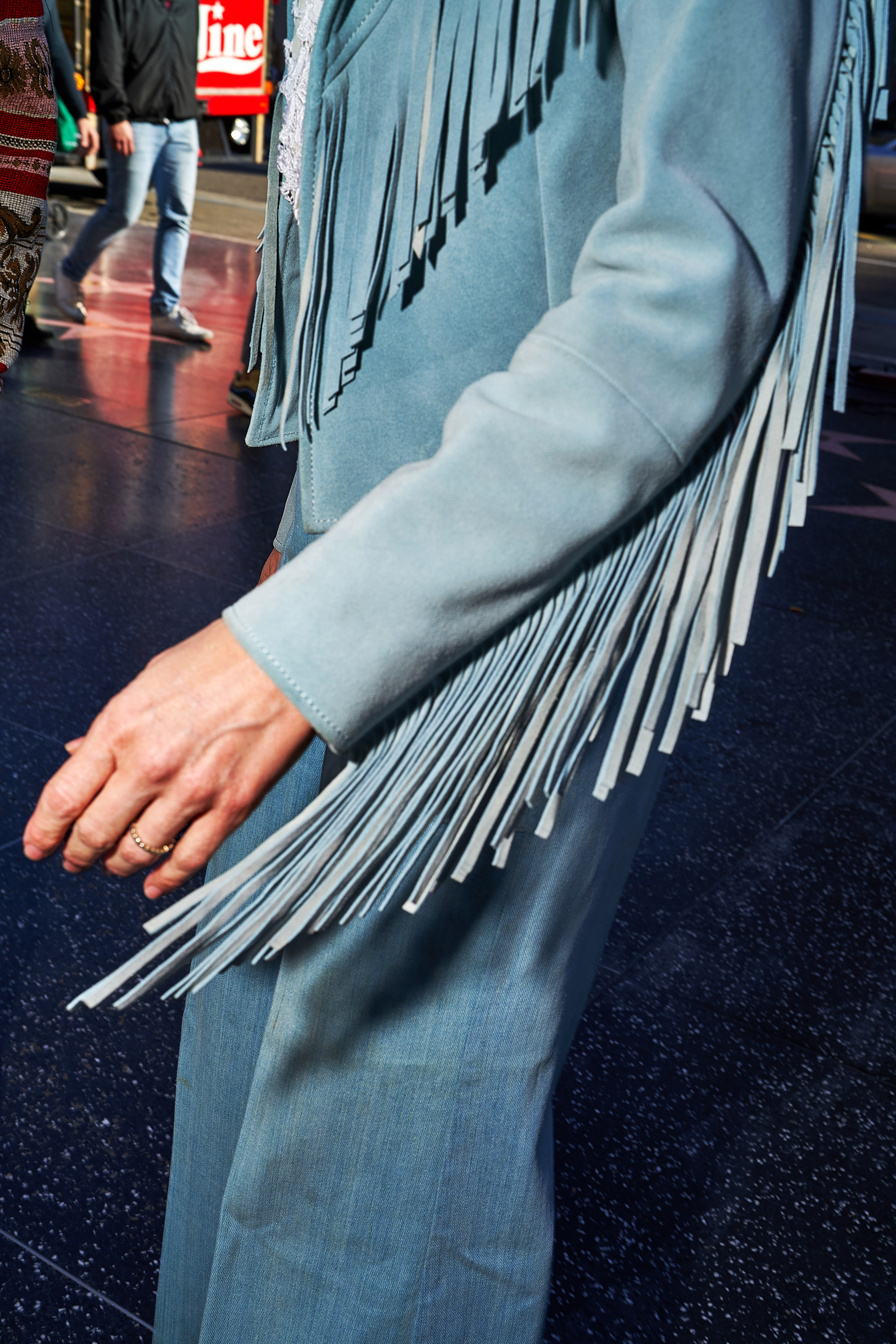
Unlike Cafiero, Cass and Bonet’s pulled-back street theater, Groskopf gets in close to find and grab a poem from a simple gesture, framing with “very little fat.” Her photos get to the point, and while there’s little room for the eye to wander and explore, there are layers upon layers of meat to cut through. The bend and suspension of an arm in a tasseled blue suede jacket. How hands—one pressed firmly against a tanned back with red fingernails, or four, gathered together sharing a plastic cup and browning banana—can be thick with history, inertia and metaphor. “I obliterate shadows...” she says, “they are my enemy.” While her flash nearly always blasts shadows clean, occasionally, when the sun competing for the brightest shine, the silhouette of her flash or hand sneaks across someone she's photographing, letting us know she's there.
Groskopf's photos are revealing yet non-judgemental. We might imagine her subjects feeling caught off guard, unaware they were about to be photographed. But somehow—we can see in the eyes of those who catch her in the act—they aren’t violated. “Not everyone shares this strange desire to wander the streets and photograph strangers," she says. For Groskopf, the camera, which she carries nearly all the time, makes her feel more comfortable in her own skin, ready to conquer and embrace the unknown.
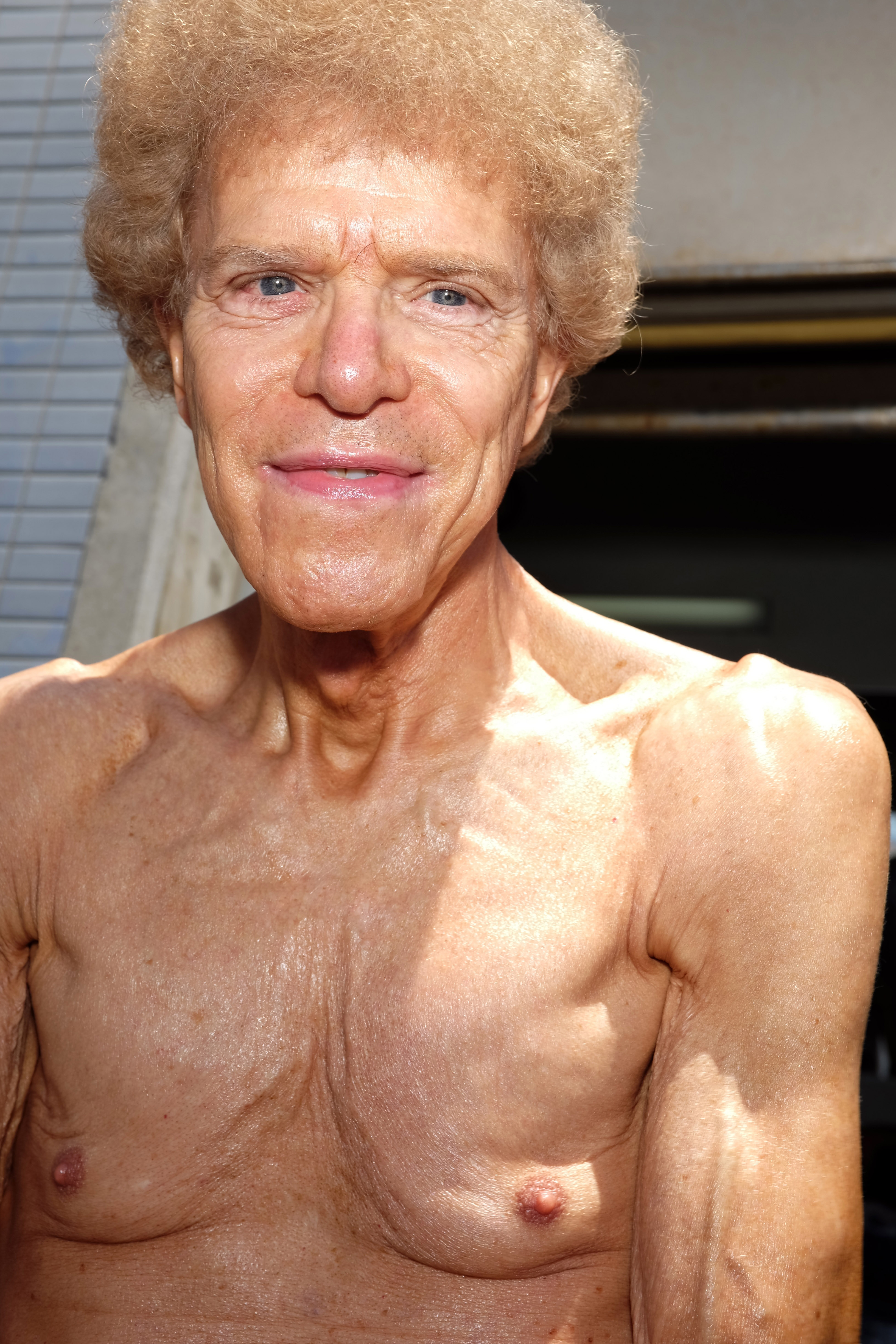
Groskopf's work sticks closer to traditional “street photography” than the other photographers in this feature, grabbing life in split seconds, but she sees these monikers as limiting and absurd, and her unique eye, bold colors, and often still-life-feeling approach to capturing life as it happens has landed her jobs with publications like Refinery29, Bloomberg Businessweek, and Wired, and recently got her selected as a coveted 2019 PDN30. “Anyone making work in the streets is participating in the past, present, and future of the genre,” she says. She makes the images she wants without “being crushed” by the genre’s rigid history. "Experiment, be joyful and have fun with it," Groskopf says. "I want the freedom to say what I want, in the exact way I want to, and no one else on this planet is going to dictate that for me. Especially not the hordes that hover over street photography chat forums."
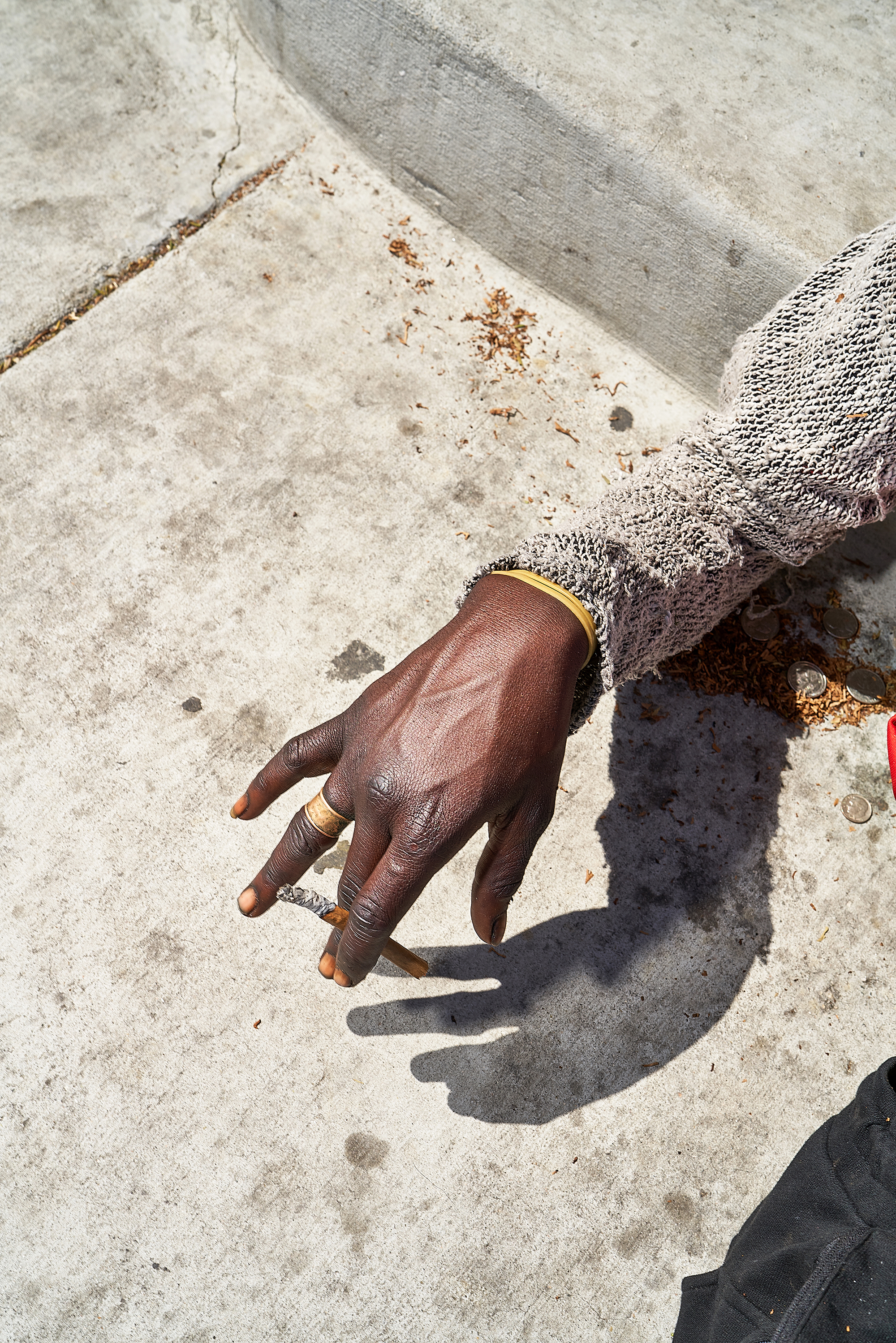
Girma Berta
Girma Berta came to street photography through graphic design. While doing client work, he was exposed to an ocean of images, often having to remove text, figures and manipulate them in various ways based on whatever job was at stake. His work on photography’s sidelines propelled him to begin making his pictures in the streets of Addis, the Ethiopian city where he lives and works.
Berta’s design background not only influenced the way he organized visual space and people within the frame when photographing but inspired him to experiment with graphic treatments in post-production. In his series Moving Shadows, for which he won the 2016 Getty Images Instagram award, Berta separated individuals or pairs of people from their environments, balancing them against vibrant colors that feel like studio backdrops. The city’s contrasty sun creates shadows that extend across his saturated backgrounds and allow them to retain their spatial depth.
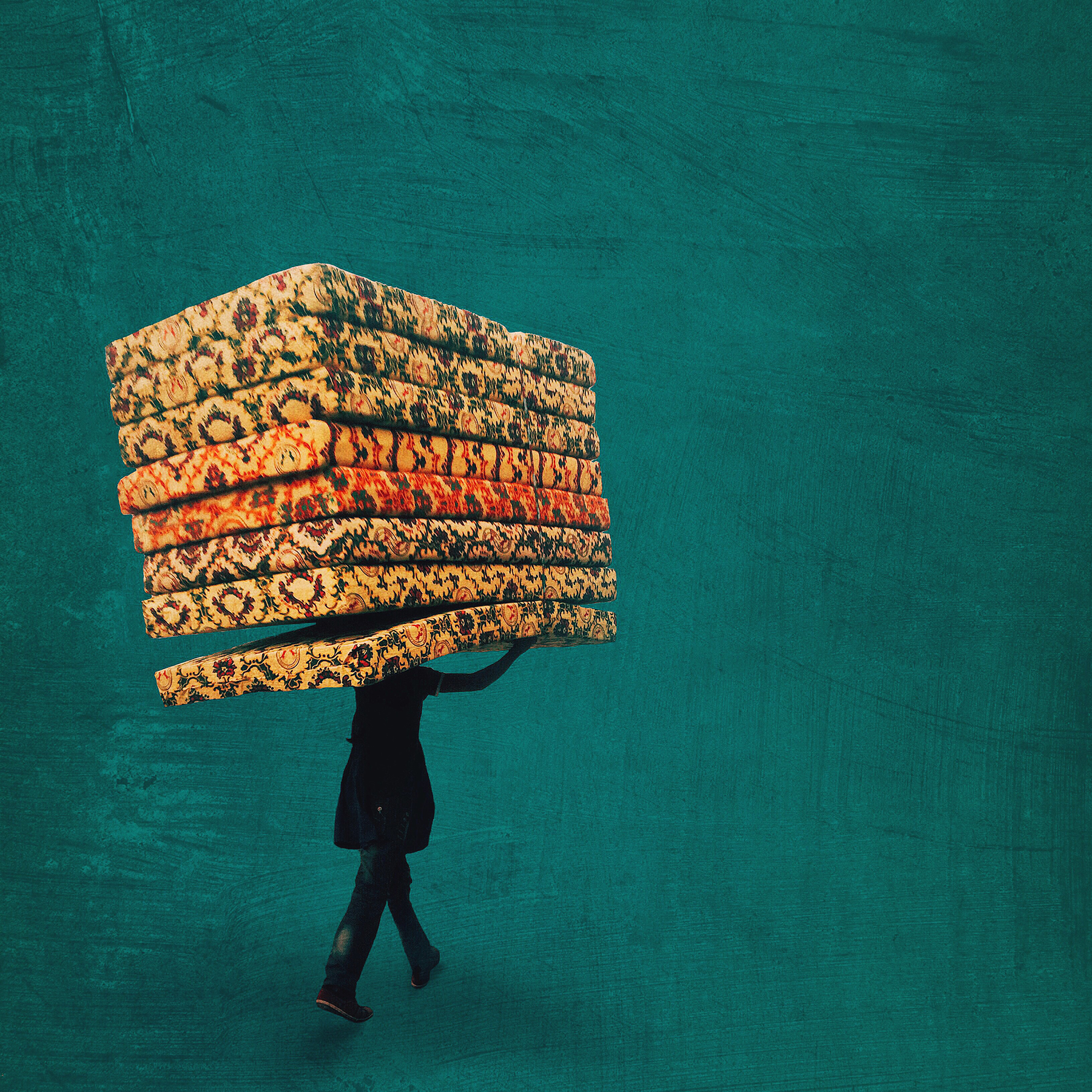
Berta’s process, like Eloisa Lodder’s, removes people from the chaotic anonymity of city life and heightens their humanity. While he consistently selects bold, saturated colors, he makes sure they don’t overpower the people. “I felt like there was more in the lives of ‘ordinary men and women’ in my city,” he tells VICE, “I felt like cutting them out from the busy city background. I can illustrate their mastery by capturing poignant moments of everyday life and offering an imagined interpretation of everyday situations.”
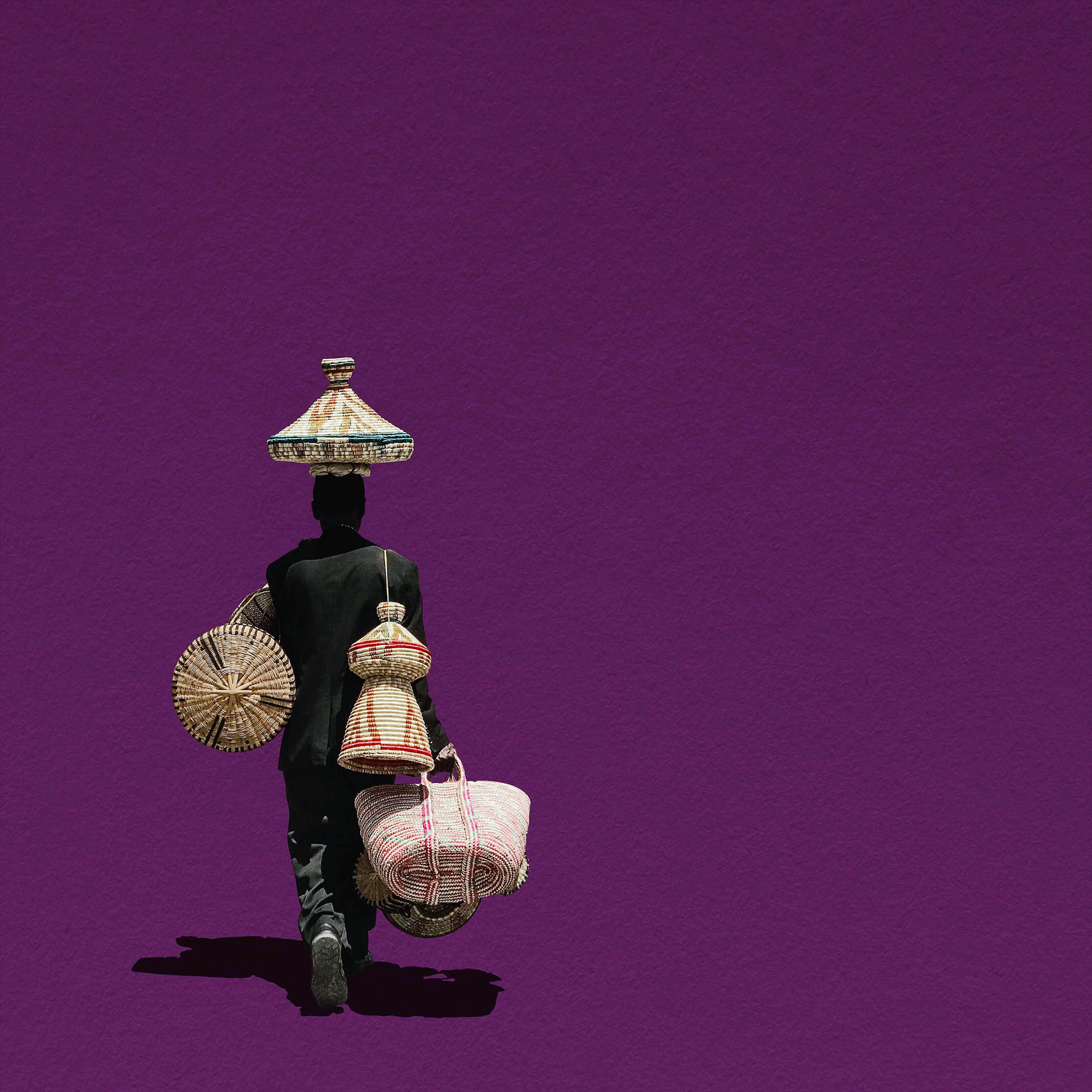
But are they “legit” street photos or just graphic design exercises incorporating photographs? What would Henri Cartier-Bresson say, and why should we care? “To me,” he says, "street photography means the raw stories we play out in our daily lives with each other on our journeys to the various locations we need to be in.” While Cartier-Bresson’s 'hardcore street photography' minions might take issue with this process, for Berta, isolating people within the city cuts the noise, or, like Michelle Groskopf, moves the “fat” of the moment to narrow in on what’s important. “These moments,” he adds, “are usually overlooked but there's so much going on on a daily basis that need to be captured and shown.”
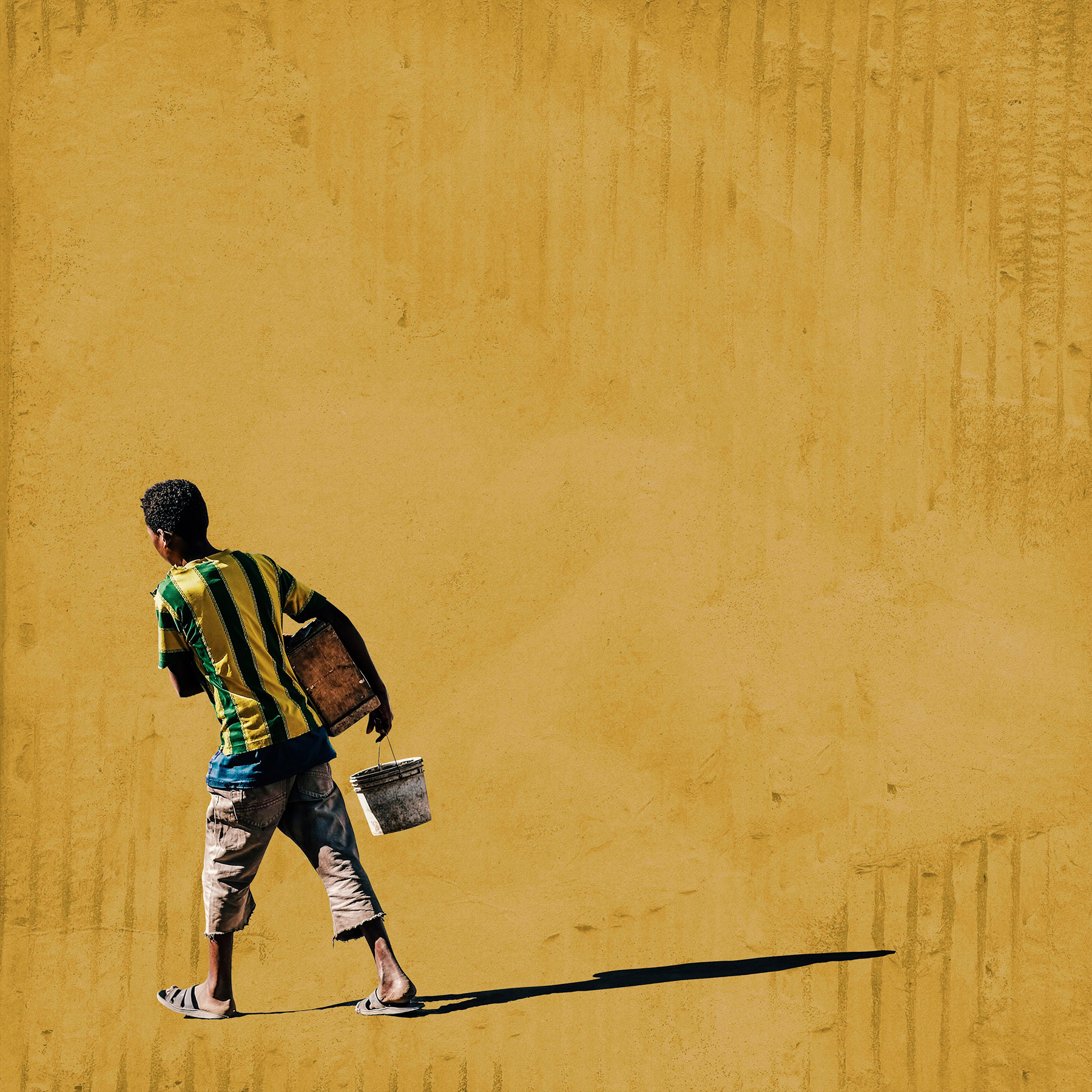
Adam Magyar
Adam Magyar has always considered himself a street photographer. From early on, he was drawn to the camera’s ability to represent time in public space. The flow of people, the navigation of bodies on streets, in subway cars, the visual and emotional complexity of the urban landscape. While he briefly worked in more traditional means, taking photographs with a medium format film camera, he quickly realized that he wanted to push photography’s ability to represent public space.
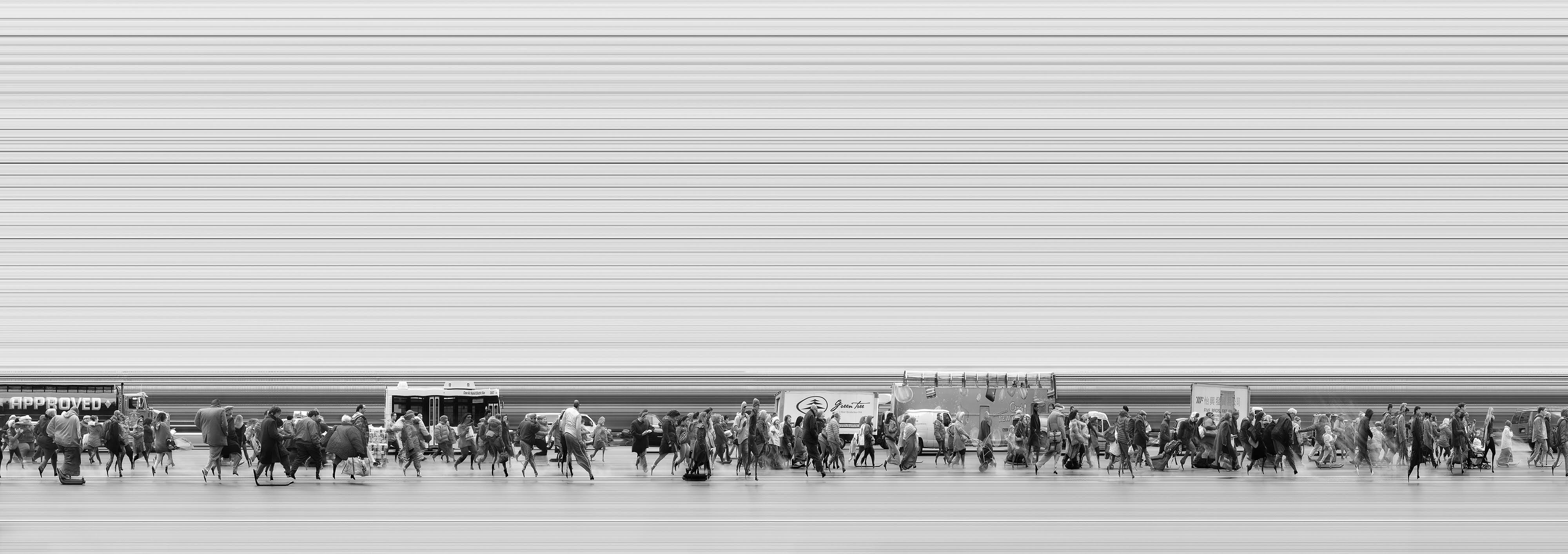
"I wanted to capture something more expansive, that an un-tinkered camera couldn't see.” Magyar tells VICE. “To put it simply, I was interested in capturing ‘being’ itself without talking about elements like human conditions or stories.” To accomplish this, he revisited a childhood fascination in electronics and digital technology and began Frankensteining digital cameras and devices, creating a new camera that could record the street and the passage of time as he imagined it.
Magyar began Urban Flow using a camera he built by combining components from a flatbed scanner with a digital camera, placing its sensor directly behind the camera’s lens. This hybrid scanner-camera remained stationary while capturing a single line of pixels several hundred times per second, repeating the same line over and over. The resulting pictures are long stretches of public space and the people inhabiting and walking through it, surrounded by glitchy but immaculate lines rendered by the scanner technology. Anything or anyone passing by scanned itself into the image. The lines look like accidents, post-production manipulations, or a 1990's internet browser trying to render an image on screen over dial-up, but they’re made entirely in camera, and are, like Pelle Cass’s work, closer to “straight photographs” than they might appear.
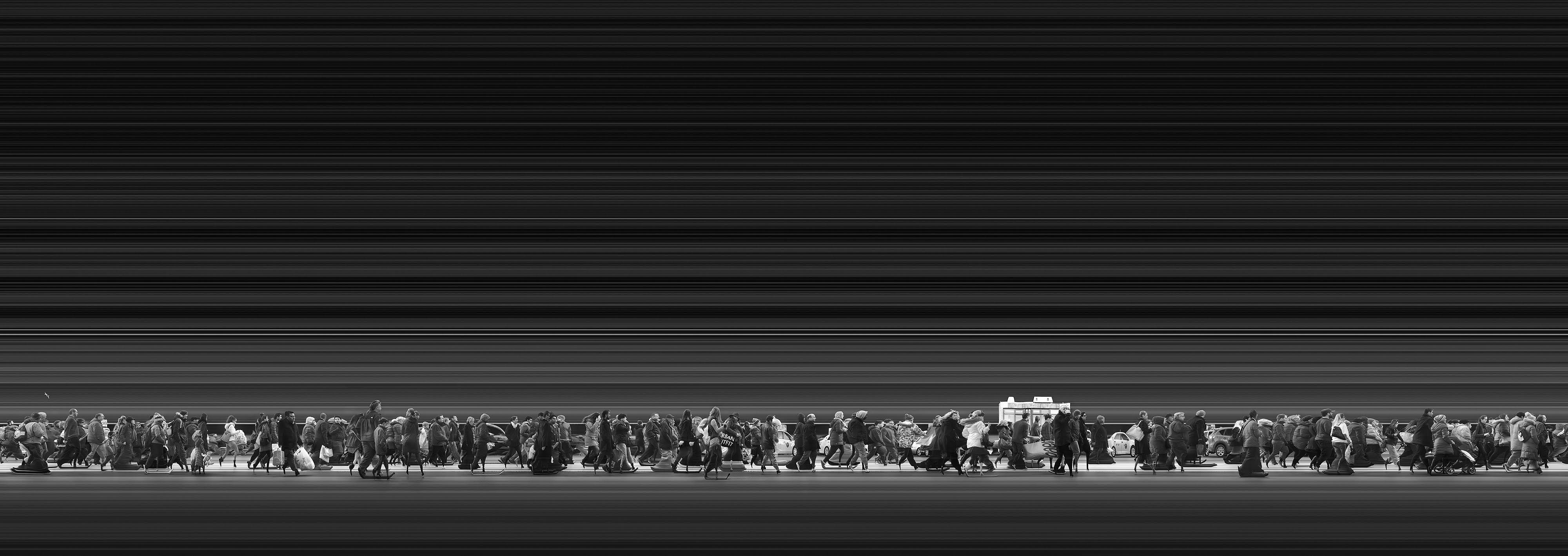
On the surface, Urban Flow might appear to be all about the wow-inducing first response. Immediate punctum. Like Michelle Groskopf’s flash-blasted punches, Magyar’s images don’t require a long-winded explanation to immediately appreciate. And that might, like with Pelle Cass’s critics, trigger snobs, purists, and internet trolls to shout “gimmick.” But there’s more to them than that. Like Cass, Magyar's photos come from a desire to make sense of the infinite flow of time within the world's largest cities and capture the fragmented parts of a person or group of people on a single visual plane. His photos and videos are about people moving together in unison, towards something— however ambiguous, abstract, or undefined—collective. “The city is complex machinery," he says, "but provides very few true connections. In these crowds, I feel like we are all somewhat lost, between desires, fears, ambitions, drives, instincts, hope, and inertness.”
Sign up for our newsletter to get the best of VICE delivered to your inbox daily.
Follow Jon Feinstein on Instagram.

